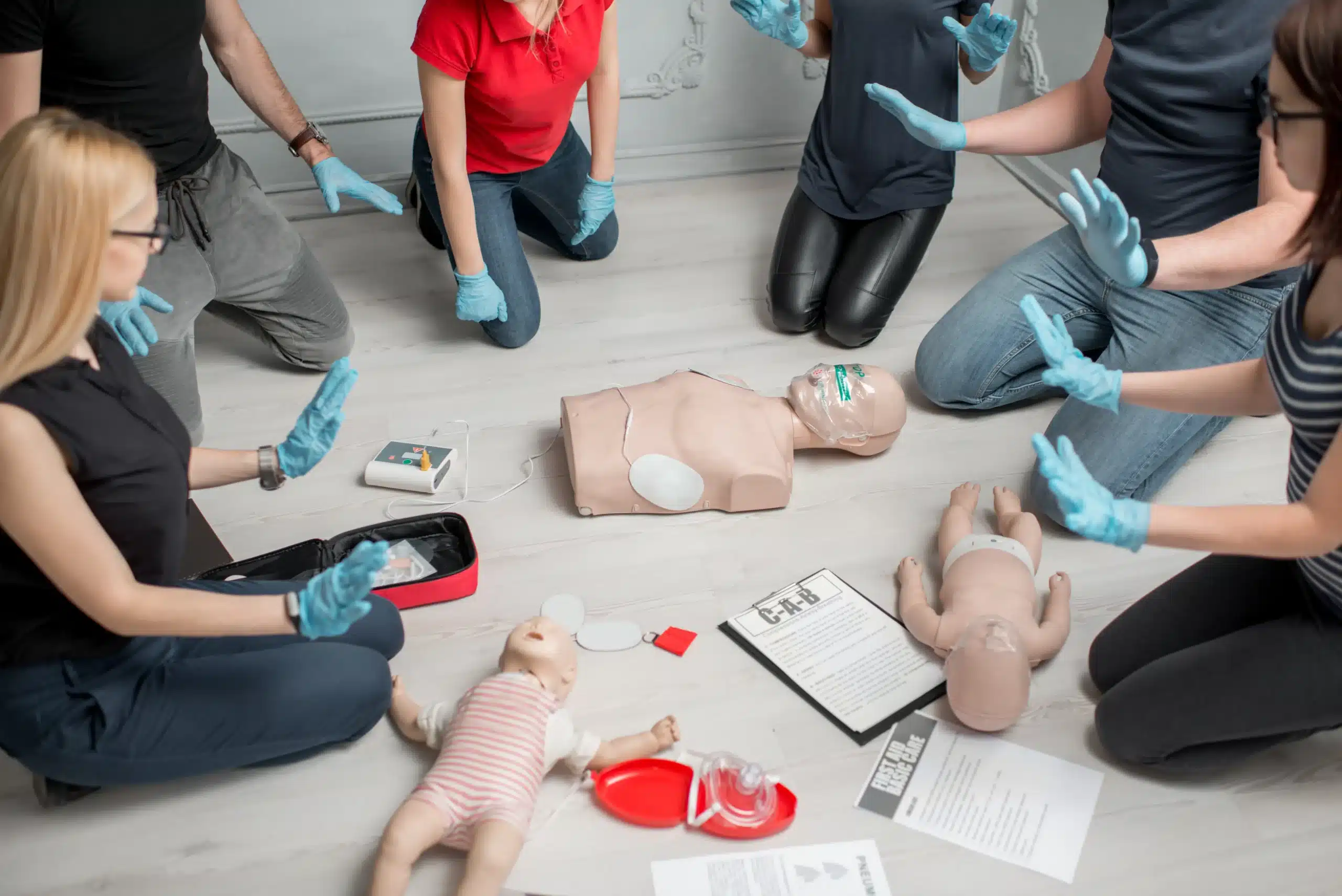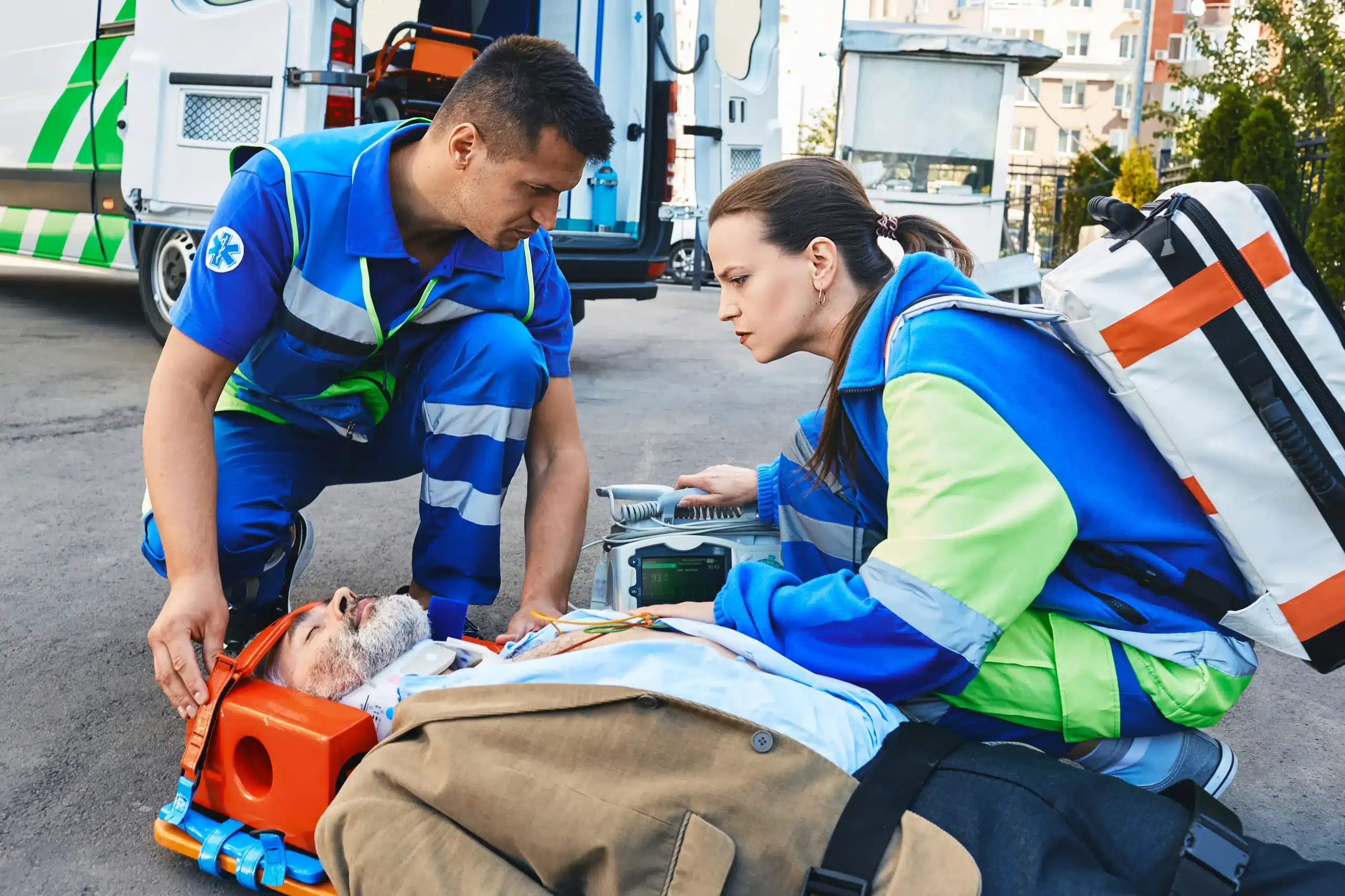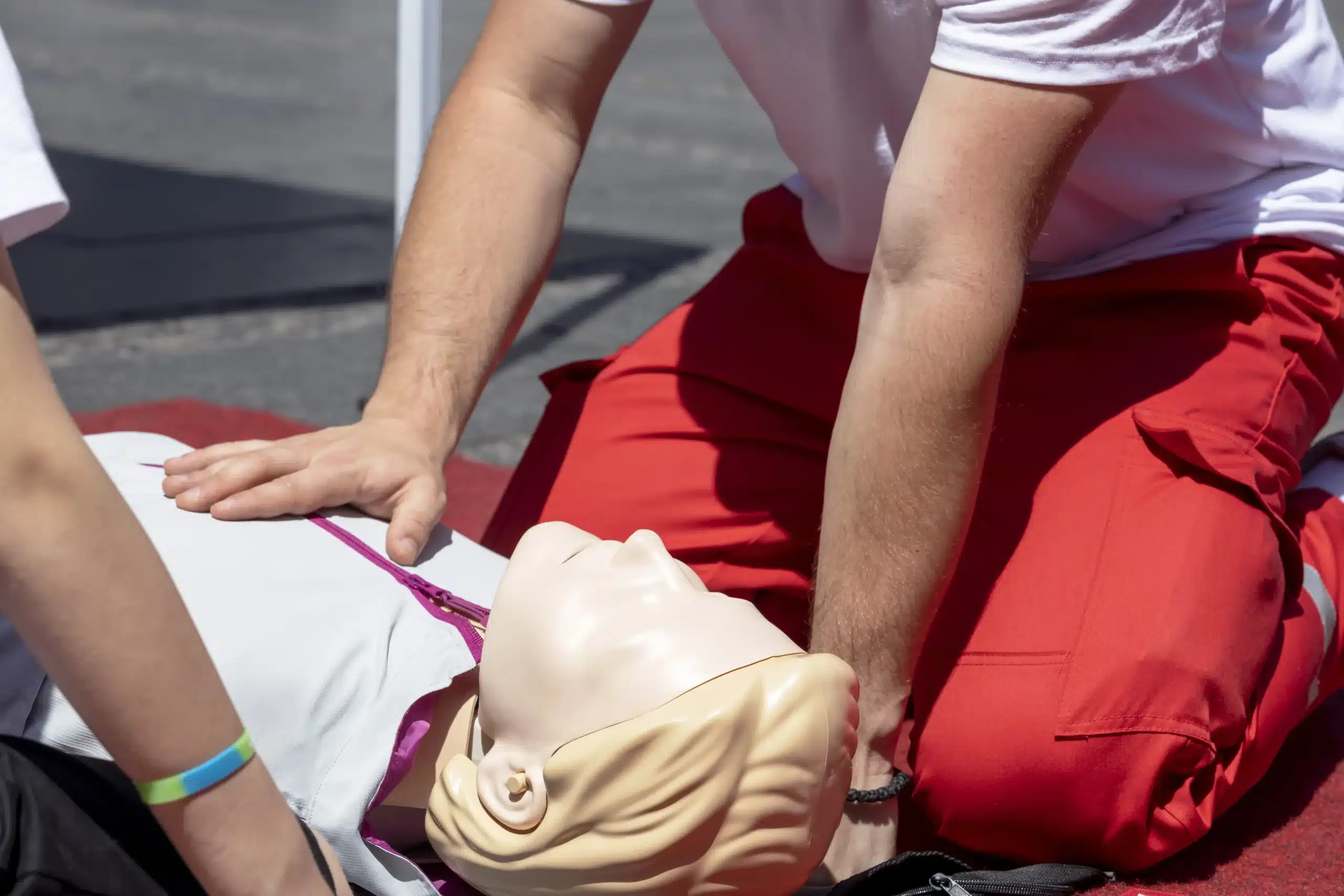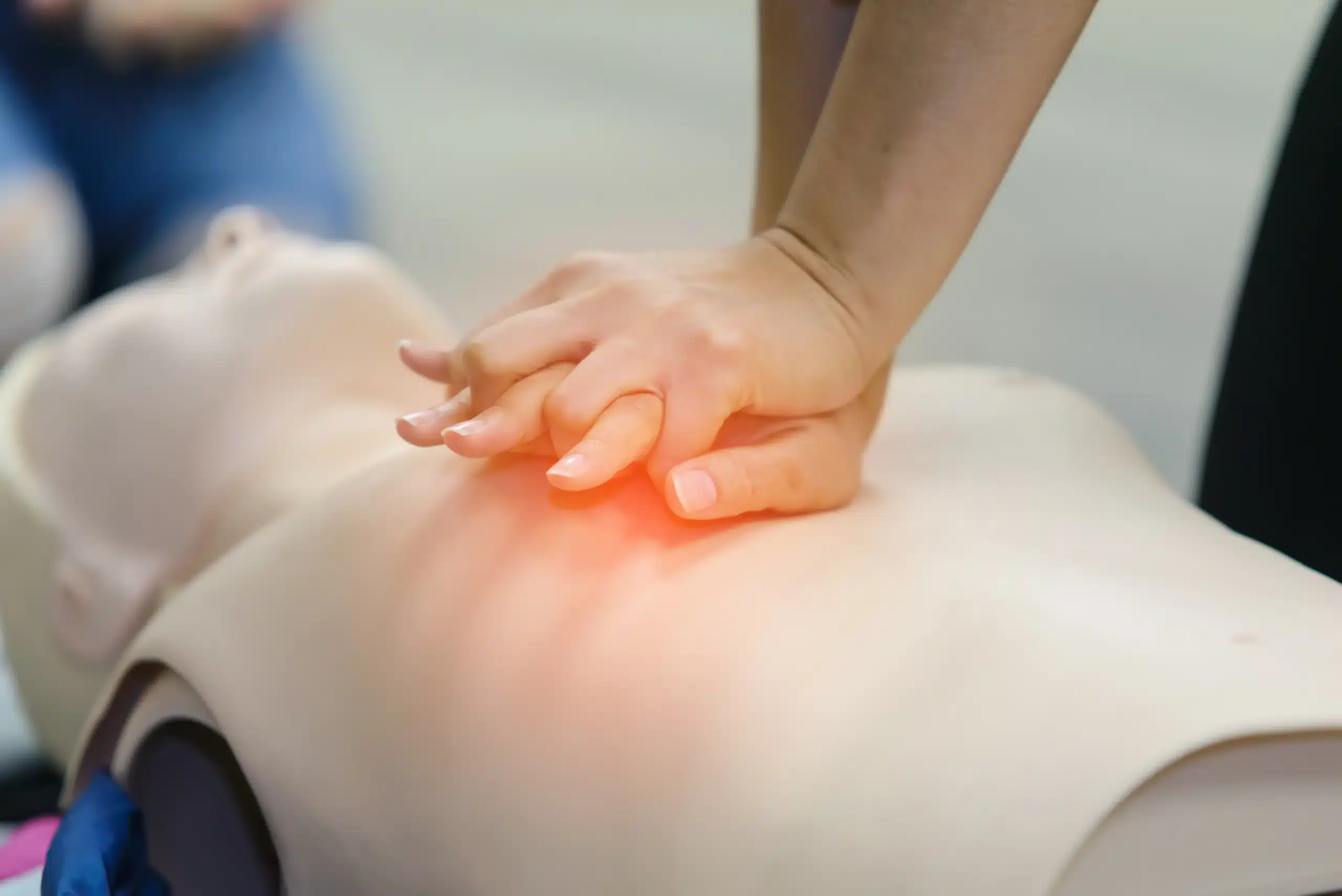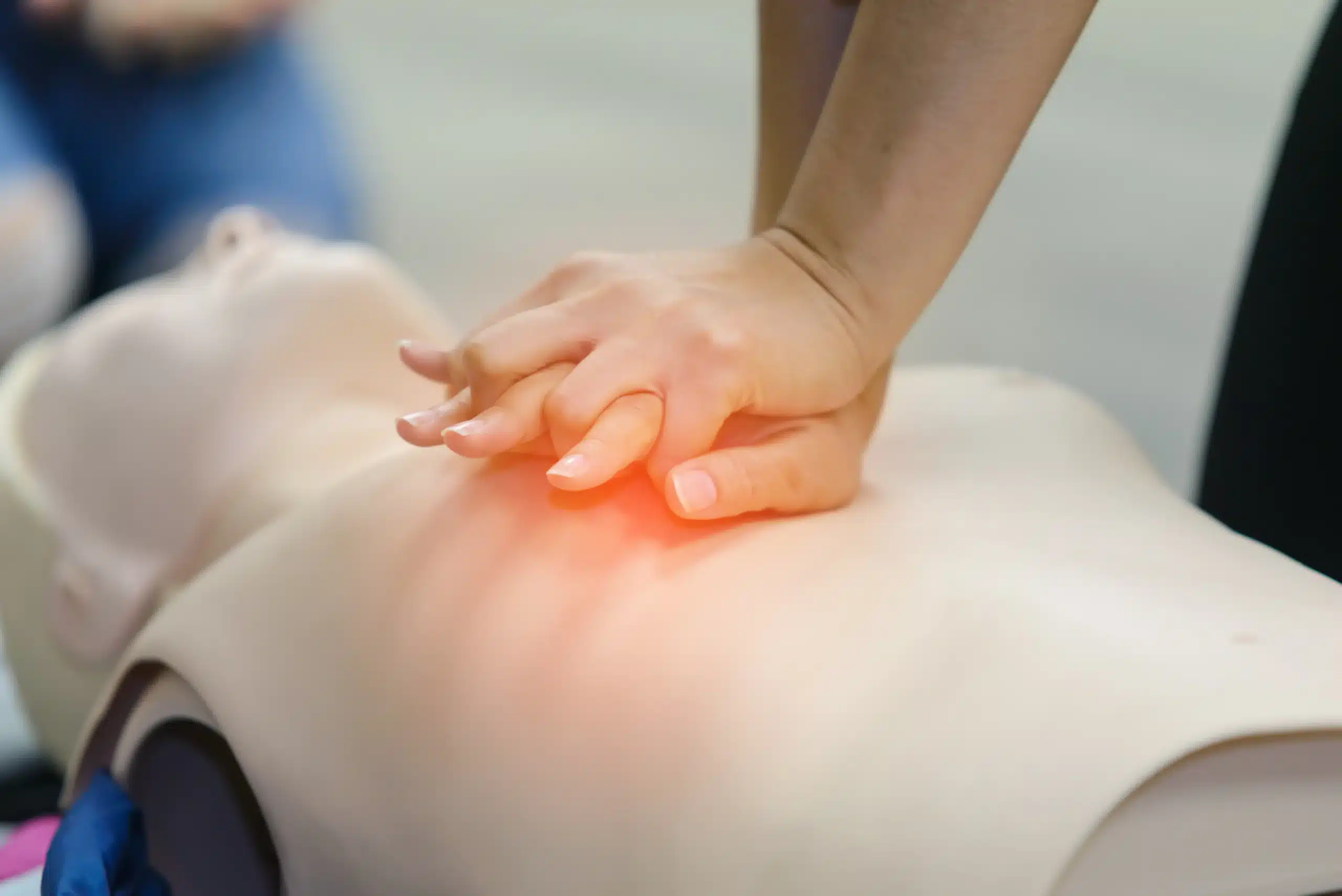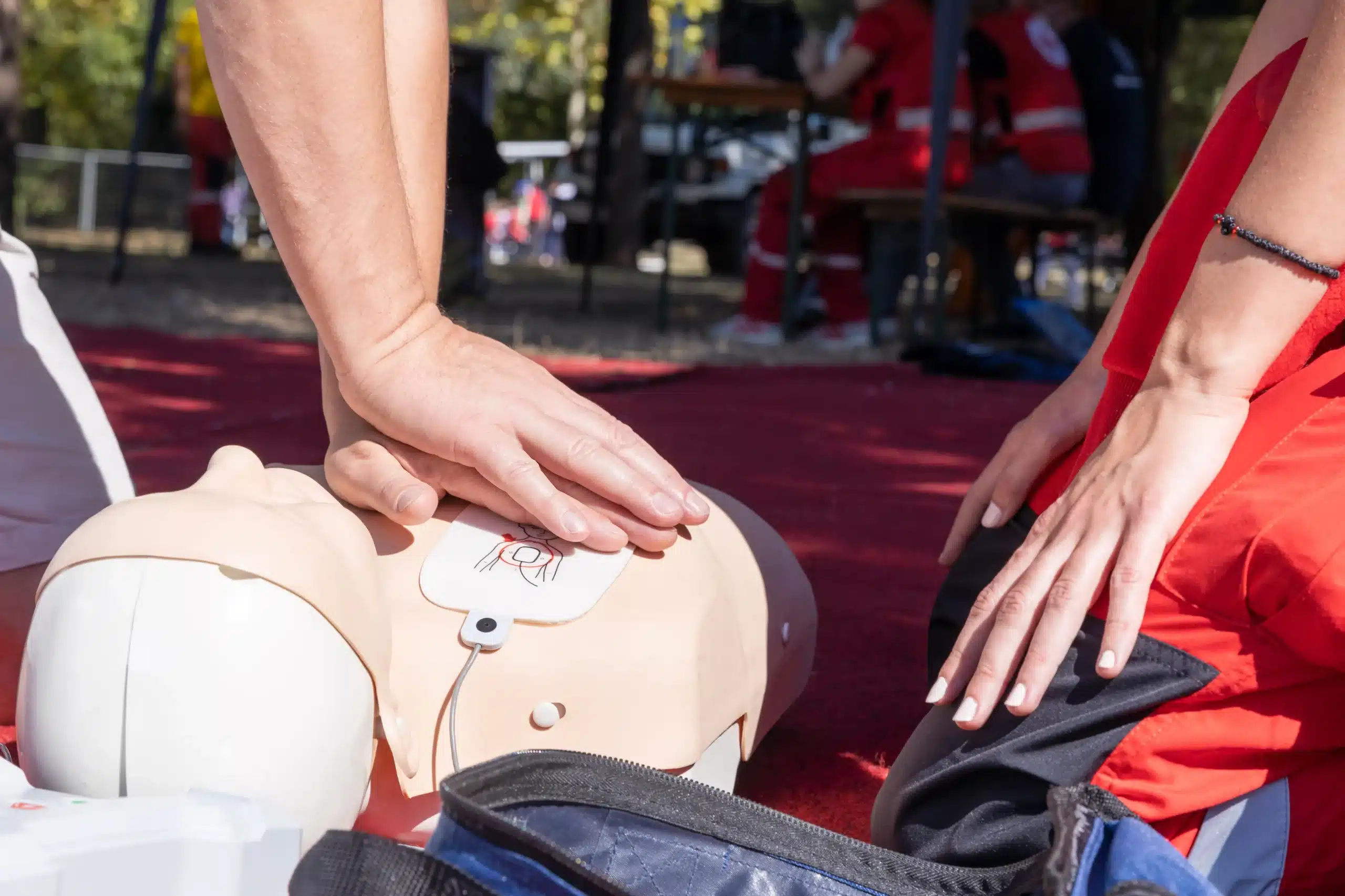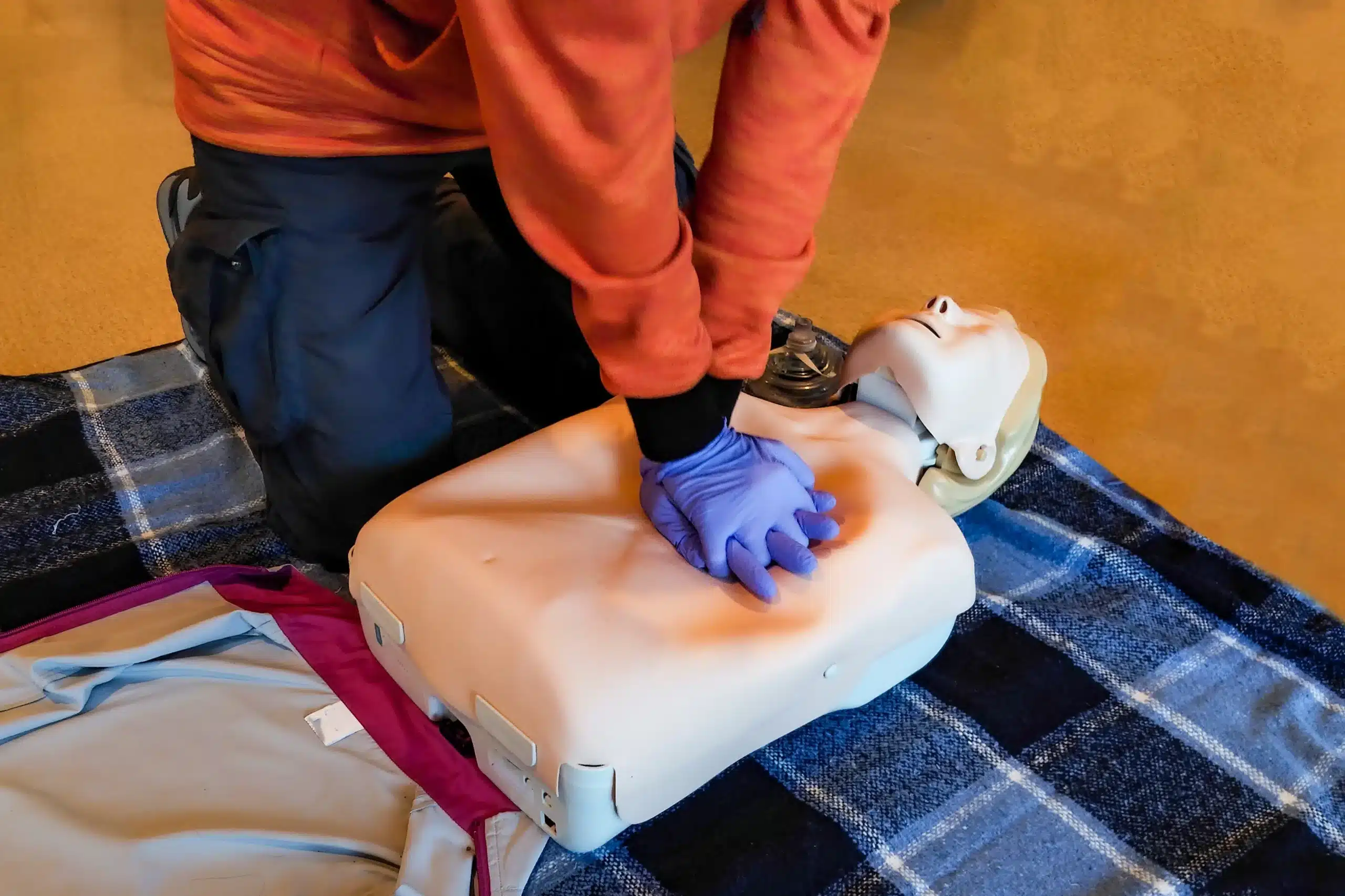Learning first aid is like having a superpower—it empowers you to step in when it matters most. Whether it’s a scraped knee at the playground or a more serious emergency, knowing what to do can make all the difference. If you’ve been searching for “first-aid classes near me,” you’re in the right place. This guide breaks down everything you need to know about first-aid training, from finding the perfect class to understanding the costs and benefits. We’ll explore different types of first aid, discuss what to expect during training, and offer tips for maintaining your certification. Let’s equip you with the skills and confidence to handle any situation.
Key Takeaways
- First aid skills are invaluable: Learning first aid equips you to handle everyday injuries and respond effectively in emergencies, giving you the confidence to act when needed. Find a class that suits your lifestyle and learn these essential skills.
- Choose the right class: From basic first aid to advanced certifications, there’s a course for everyone. Consider your individual needs and explore the various options available to find the perfect fit.
- Stay prepared: Maintain your first-aid certification and refresh your skills regularly. Staying up-to-date with the latest guidelines ensures you’re always ready to provide effective care and potentially save a life.
What are First-Aid Classes?
First-aid classes teach you how to handle medical emergencies. You’ll learn to assess a situation, deliver basic life support, and manage common injuries like cuts, burns, and fractures. These classes mix theory with hands-on practice, building your confidence so you can respond effectively in real-life situations. First-aid training is invaluable, whether you’re at home, at work, or out in public. It empowers you to act quickly and potentially save a life.
First-aid courses cover a lot of ground, from recognizing a heart attack or stroke to administering CPR. You’ll learn how to control bleeding, treat shock, and care for someone who is choking. Many courses also cover specific emergencies like allergic reactions and seizures. This well-rounded approach makes these classes helpful for parents, caregivers, and professionals. CPR classes in Palo Alto often include first-aid training as a key part of the curriculum.
Explore First-Aid Class Types
First-aid classes cover various topics and techniques, from treating minor cuts to responding to life-threatening emergencies. Understanding the different types of classes available helps you choose the best one for your needs.
Basic First Aid
Basic first-aid classes teach essential skills to manage common injuries and illnesses. You’ll learn how to treat cuts, burns, sprains, and other minor injuries. These classes also cover recognizing and responding to medical emergencies like choking or allergic reactions. Safety Training Seminars offers a variety of AHA courses, including CPR and first aid, to build a solid foundation in basic life support skills.
CPR and AED Training
CPR and AED training teaches you how to perform CPR and use an AED. These skills are crucial for responding to cardiac arrest and other life-threatening emergencies. Taking CPR courses in Palo Alto equips you with the knowledge and practice needed to potentially save a life. Learning CPR can make a real difference in your community, empowering you to respond effectively during medical crises.
Advanced First Aid
Advanced first-aid classes build upon the basics, covering more complex medical situations. These courses may include administering medications, managing severe bleeding, and using advanced airway management techniques. Advanced certifications like ACLS and PALS are available for healthcare providers and others requiring in-depth knowledge and skills.
Specialized Courses
Specialized first-aid courses cater to specific needs and professions. For example, wilderness first aid, childcare providers, or those working in high-risk environments. Specialized training like the Neonatal Resuscitation Program (NRP) and EMSA Pediatric CPR & First Aid are also available for healthcare professionals needing specialized certifications.
Find First-Aid Classes Near You
Ready to find a first-aid class? It’s easier than you think. Whether you’re in a big city or a small town, several strategies can help you find the perfect course.
Search Online
Start with a simple online search. Type “first-aid classes near me” into your search engine. You’ll likely find several options, including national organizations like the American Red Cross and local training centers. Many providers list their schedules and course details online, making it easy to compare and choose the best fit for your needs. For those in Palo Alto, finding CPR and first-aid certification classes is straightforward with a quick search.
Check Local Organizations
Community centers, fire departments, and hospitals often offer first-aid training. Consider checking with organizations like your local YMCA or community college. Safety Training Seminars, an American Heart Association (AHA) Training Center, offers various AHA courses, including CPR and first aid. You can also find CPR classes in Palo Alto through various providers, including the City of Palo Alto Fire Department. Browse their websites or contact them directly for class information.
Read Reviews
Before committing to a class, see what other students say. Online reviews can offer valuable insights into the quality of instruction, course materials, and overall experience. Costs can vary, so reading reviews can help you find a course that meets both your budget and learning style. Palo Alto CPR classes provide valuable training to handle medical emergencies, potentially saving lives within your community.
Understand First-Aid Class Costs
CPR and first-aid training are valuable investments. It’s helpful to understand the costs involved. Let’s break down what you can typically expect to pay and explore ways to save.
Typical Prices
First-aid class costs in Palo Alto vary based on a few factors. The most significant factor is the course level. A basic first-aid course will typically be less expensive than a comprehensive course that includes CPR and AED training. The certifying organization also plays a role. Some organizations, like the American Heart Association, have standardized pricing, while others may have more flexible options. Location can also influence cost. Courses in metropolitan areas are sometimes priced higher. In Palo Alto, you’ll find a range of options, so compare prices. CPR and First-Aid certification classes are widely available throughout the city.
Discounts and Financial Aid
Don’t let cost be a barrier to learning these life-saving skills. Many organizations offer discounts for groups, students, or those renewing their certifications. Ask about potential discounts when you contact a training provider. Safety Training Seminars, for example, offers a low price guarantee and provides the lowest prices for CPR BLS Renewal. They also offer various courses, including CPR, BLS, ACLS, and PALS certifications. For information about financial aid, reach out to the training center directly. They can provide information on any available programs or payment plans.
Discover the Benefits of First-Aid Training
Learning first aid offers a range of benefits, from the deeply personal to the career-enhancing. It empowers you to help others, builds your confidence, and can even open doors to new opportunities. Let’s explore some key advantages of becoming first-aid certified.
Save Lives
First and foremost, first-aid training equips you with the skills to potentially save a life. In a medical emergency, knowing how to respond quickly and effectively can be crucial. CPR training, for example, has been proven to significantly increase the chances of survival in cases of cardiac arrest. Even basic first-aid knowledge can help stabilize someone until professional help arrives.
Gain Confidence
Beyond the practical skills, first-aid training instills a sense of confidence. Knowing you can handle emergency situations helps you stay calm and collected under pressure. This confidence can extend beyond medical emergencies, empowering you to take charge and offer assistance in various challenging situations. First-aid training builds resilience and prepares you to face unexpected events with greater composure.
Advance Your Career
For many professions, first-aid certification is a requirement or a significant asset. Healthcare workers, teachers, and childcare providers are just a few examples of careers where first-aid knowledge is essential. Certification demonstrates your commitment to safety and can give you a competitive edge in the job market. Even if it’s not mandatory, having first-aid skills on your resume can make you a more desirable candidate.
Make a Difference
Becoming first-aid certified allows you to make a real difference in your community. You become a valuable resource for your family, friends, coworkers, and even strangers who might need help. First-aid and CPR training empowers you to respond effectively to emergencies, creating a safer environment for everyone around you. It’s a rewarding experience to know you have the skills to provide assistance and potentially save lives.
Know What to Expect in a First-Aid Class
So, you’ve decided to take a first-aid class—fantastic! Knowing what to expect can help you feel prepared and confident. First-aid classes offer a blend of theoretical knowledge and practical skills, ensuring you’re ready to handle a range of emergencies. Let’s break down the key components:
Course Structure
First-aid classes typically follow a structured curriculum covering essential topics. You’ll learn how to assess an emergency situation, including checking for responsiveness and identifying potential hazards. The course will guide you through performing CPR, controlling bleeding (from minor cuts to more serious wounds), and managing common injuries like sprains, fractures, and burns. You’ll also learn how to handle various medical emergencies, such as allergic reactions, heart attacks, and strokes. Expect a combination of lectures, demonstrations, and discussions to reinforce your learning. For a deeper dive into course content, check out resources like the American Red Cross First Aid/CPR/AED training.
Hands-on Practice
Hands-on practice is where you’ll truly solidify your skills. Simulations and role-playing scenarios allow you to apply what you’ve learned in realistic situations. You’ll have the chance to practice bandaging wounds, splinting fractures, and performing CPR on mannequins. This practical experience builds your confidence and prepares you to react effectively under pressure. Don’t be afraid to ask questions and engage actively during these sessions—it’s your chance to hone your skills and become comfortable with the procedures. Safety Training Seminars offers insights into the hands-on aspects of first-aid training.
Get Certified
After successfully completing your first-aid course, you’ll receive nationally recognized first-aid certification. This certification validates your skills and knowledge, demonstrating your ability to provide effective first-aid care. It can also be a valuable asset for your career, especially in fields like healthcare, education, and public safety. Keep in mind that certifications typically have an expiration date, so remember to renew your certification to stay up-to-date with the latest guidelines and maintain your credentials.
Choose the Right First-Aid Class
Not all first-aid classes are created equal. The best class for you depends on your specific needs and goals. Whether you’re a healthcare provider, a concerned parent, or just want to be prepared, take these factors into account when selecting a first-aid course.
Assess Your Needs
First, consider why you want first-aid training. Are you required to get certified for your job or are you simply interested in learning essential life skills? Understanding your motivation will help you choose the right level of training. If you’re a healthcare provider, you’ll likely need a more advanced certification than someone who wants basic first aid knowledge for their home or workplace. Think about the situations you’re most likely to encounter and what skills would be most helpful. This will guide you toward the appropriate course. A practical guide to first-aid training in Palo Alto can offer more personalized advice based on your location.
Compare Courses
Once you have a general idea of your needs, start comparing different first-aid courses. Look at the course content, duration, and certification offered. A comprehensive guide to CPR courses in Palo Alto can help you understand the differences between various types of CPR and first-aid training, including BLS, ACLS, PALS, and standard first aid. Consider factors like the balance between classroom instruction and hands-on practice, which is crucial for developing real-world skills. Safety Training Seminars, for example, offers a range of American Heart Association (AHA) certified courses, known as the gold standard in CPR training. This ensures your certification is widely recognized and respected. Group discounts may be available.
Check Instructor Qualifications
Finally, don’t forget to research the instructors’ qualifications. Experienced and certified instructors can make a significant difference in the quality of your training. Look for instructors who are passionate about teaching and have a strong background in first aid and emergency care. Safety Training Seminars is a woman-owned AHA Training Center, indicating a commitment to quality instruction. Also, check if the program uses updated materials and techniques aligned with the latest guidelines. Many CPR classes, including the RQI program, provide pre-course materials to help you prepare and get the most out of your training. Check the low price guarantee.
Find First-Aid Classes in Palo Alto and Nearby
Finding the right first-aid class is easier than you think. Whether you’re in Palo Alto, Redwood City, Menlo Park, or a neighboring community, plenty of options are available. Here are a few places to start:
Palo Alto CPR Classes
Palo Alto CPR Classes, offered by Safety Training Seminars, is your one-stop shop for comprehensive first-aid training. They offer various courses, including CPR, first aid, BLS, ACLS, and PALS. With daily classes from 8 am to 10 pm, finding a time that works for you is simple. They also have a low price guarantee, ensuring you receive excellent value.
Safety Training Seminars
Safety Training Seminars provides American Heart Association (AHA)-certified courses, giving you high-quality instruction and a nationally recognized certification. They offer everything from basic first aid to advanced certifications like ACLS and PALS. If you need training for a group, they offer group discounts. You can also explore their convenient RQI program for maintaining your AHA certification.
American Red Cross
While Safety Training Seminars focuses on AHA certifications, the American Red Cross is another excellent resource. They offer various first-aid and CPR courses, often with different formats and locations. Visit their website to find classes near you.
Local Community Colleges
Check with your local community colleges for first-aid training courses open to the public. These courses are often an affordable way to gain essential skills and earn a certification.
Hospitals and Medical Centers
Hospitals and medical centers, such as Stanford Health Care, frequently offer CPR and first-aid training. They often provide various courses, including BLS, ACLS, and PALS certification. Contact hospitals in your area to learn about their programs.
Prepare for Your First-Aid Class
Getting ready for your first-aid class involves a little prep work. It’s not like studying for a final exam, but a little preparation helps you absorb the information and feel confident practicing your skills.
Gather Your Materials
Most first-aid courses provide the essential materials, like bandages, antiseptic wipes, and CPR mannequins. It’s always a good idea to check with your course provider—like Safety Training Seminars—to see if they recommend bringing anything specific. You might want a notebook and pen to take notes and a water bottle to stay hydrated, especially if your class involves hands-on practice. Comfortable clothing is also important, as you’ll be moving around and practicing techniques.
Study Before Class
While you don’t need to be a medical expert before taking a first-aid class, familiarizing yourself with basic concepts can be helpful. Reading up on first-aid basics gives you a foundation for the material covered in class. Understanding the importance of first-aid training can also increase your motivation and make learning more engaging. Many providers, including those offering CPR courses in Palo Alto, offer resources or pre-course materials you can review beforehand. This will help you get the most out of your class time.
Maintain Your First-Aid Certification
Once you’ve earned your first-aid certification, staying up-to-date is key. Your skills and knowledge can save lives, so refreshing them regularly ensures you’re always prepared. Here’s how to keep your certification current and continue learning:
Renew Your Certification
First-aid certifications, like those from the American Heart Association, are typically valid for two years. Keep track of your expiration date and plan to renew a few months before it lapses. This avoids any gaps in your qualification and ensures you’re always ready to respond to emergencies. Many organizations require current certifications, so renewing on time keeps you compliant and eligible for various opportunities. Check with your certifying organization, like the American Red Cross, for specific renewal requirements and available courses.
Continue Your Education
Even after renewing your certification, there’s always more to learn in the ever-evolving field of first aid. Continuing your education through refresher courses or advanced training keeps you informed about the latest techniques and best practices. The Red Cross offers a variety of first-aid courses to fit different schedules and learning styles. Consider taking a smaller, more personalized class for focused instruction and hands-on practice. Look for courses with comprehensive curriculums that cover a wide range of emergency situations, from basic cuts and burns to more complex scenarios. Staying proactive about your first-aid education ensures you can confidently handle any situation. Plus, expanding your skillset can open doors to new opportunities.
Related Articles
- First-Aid Training in Palo Alto: A Practical Guide – Palo Alto CPR Classes
- First Aid Training in Menlo Park: A Practical Guide – Palo Alto CPR Classes
- First-Aid Training in Redwood City: A Complete Guide – Palo Alto CPR Classes
- CPR Certification in Palo Alto: Your Guide – Palo Alto CPR Classes
- Prioritize Workplace CPR and First-Aid Training for Safety
Frequently Asked Questions
What’s the difference between basic first aid and advanced first aid?
Basic first aid equips you to handle common injuries like cuts, burns, and sprains, and also covers recognizing emergencies like heart attacks. Advanced first aid delves into more complex situations, potentially involving medication administration or advanced airway management. The right choice depends on your needs and career goals. If you’re unsure, start with basic and consider advanced training later.
How do I choose the right first-aid class for me?
Think about why you need first aid. Is it for your job, personal knowledge, or both? This helps determine the right level. Compare course content, duration, and the certifying organization. Look for hands-on practice opportunities and check instructor qualifications. Reading reviews can also give you a feel for past student experiences.
Where can I find first-aid classes near me?
Start with an online search. Check local community centers, hospitals, and organizations like the Red Cross. Look at websites or contact them directly for schedules and details. Don’t hesitate to compare prices and course offerings to find the best fit.
How much do first-aid classes cost?
Costs vary based on the course level, certifying organization, and location. Basic classes are generally less expensive than advanced ones. Look for potential discounts for groups, students, or renewals. Some organizations may offer financial aid, so it’s always worth asking.
How can I maintain my first-aid certification after completing a class?
Most certifications are valid for about two years. Track your expiration date and renew a few months in advance. Consider refresher courses or advanced training to stay updated on the latest techniques and guidelines. Continuous learning ensures your skills remain sharp and you’re always prepared.
